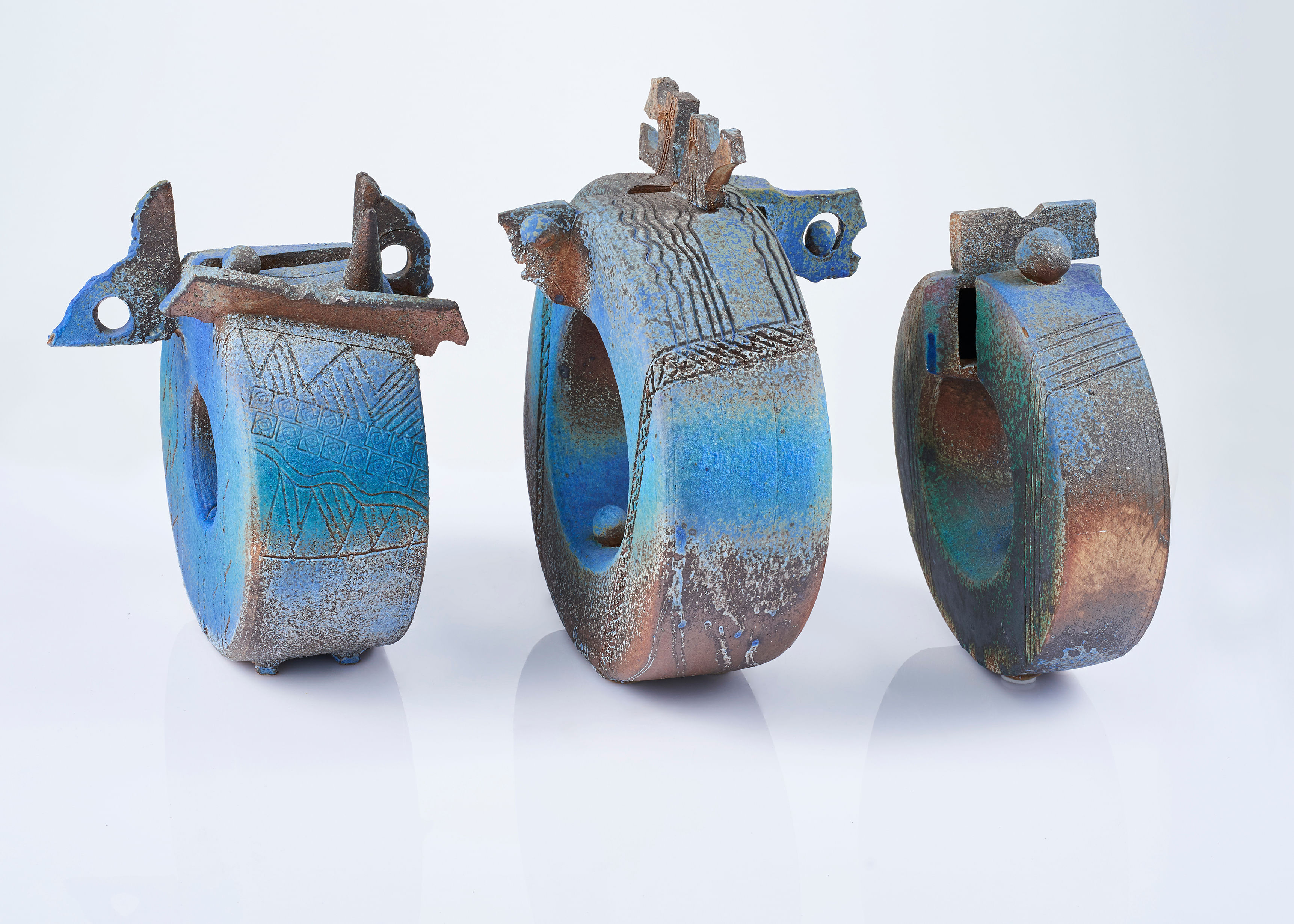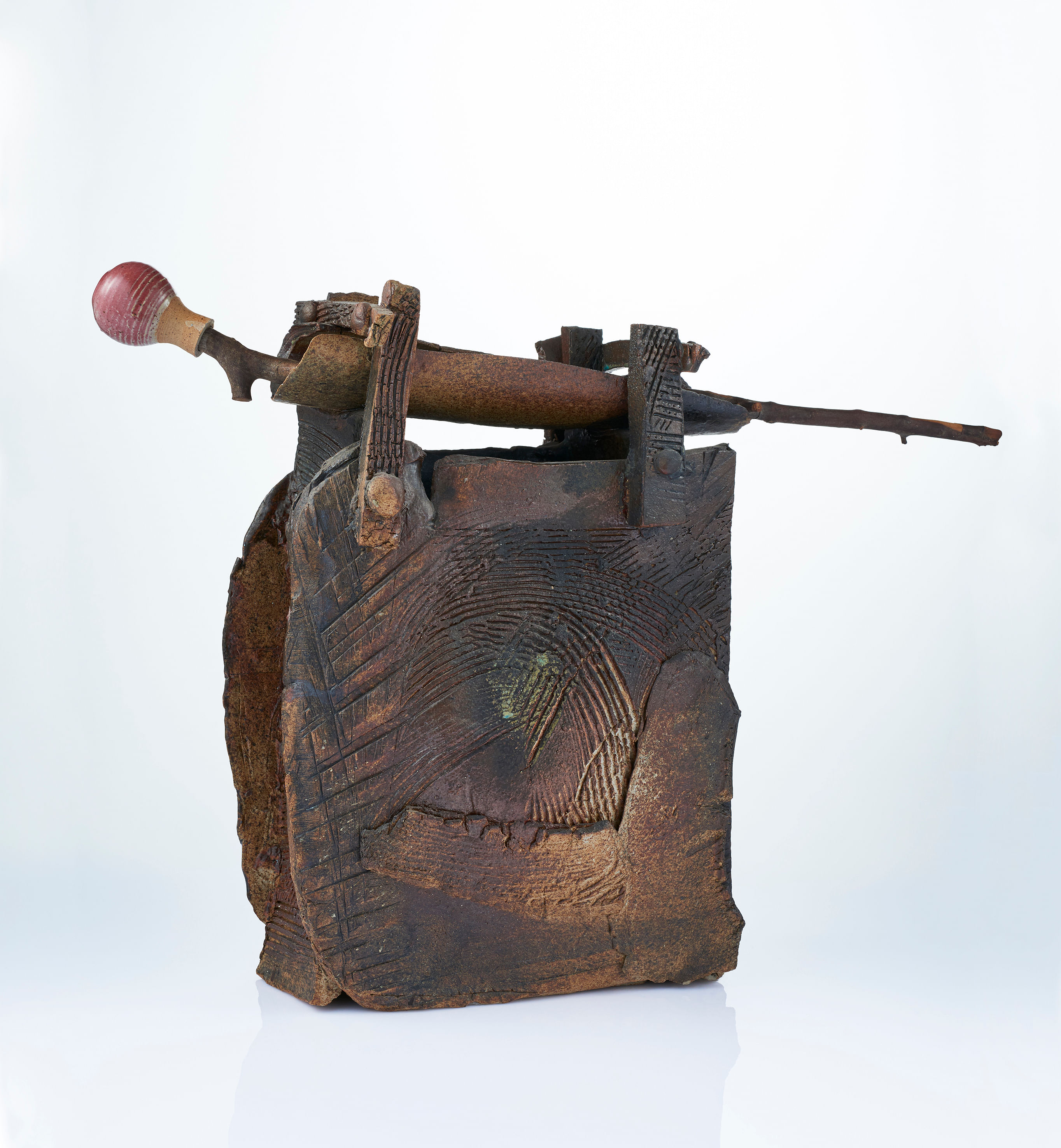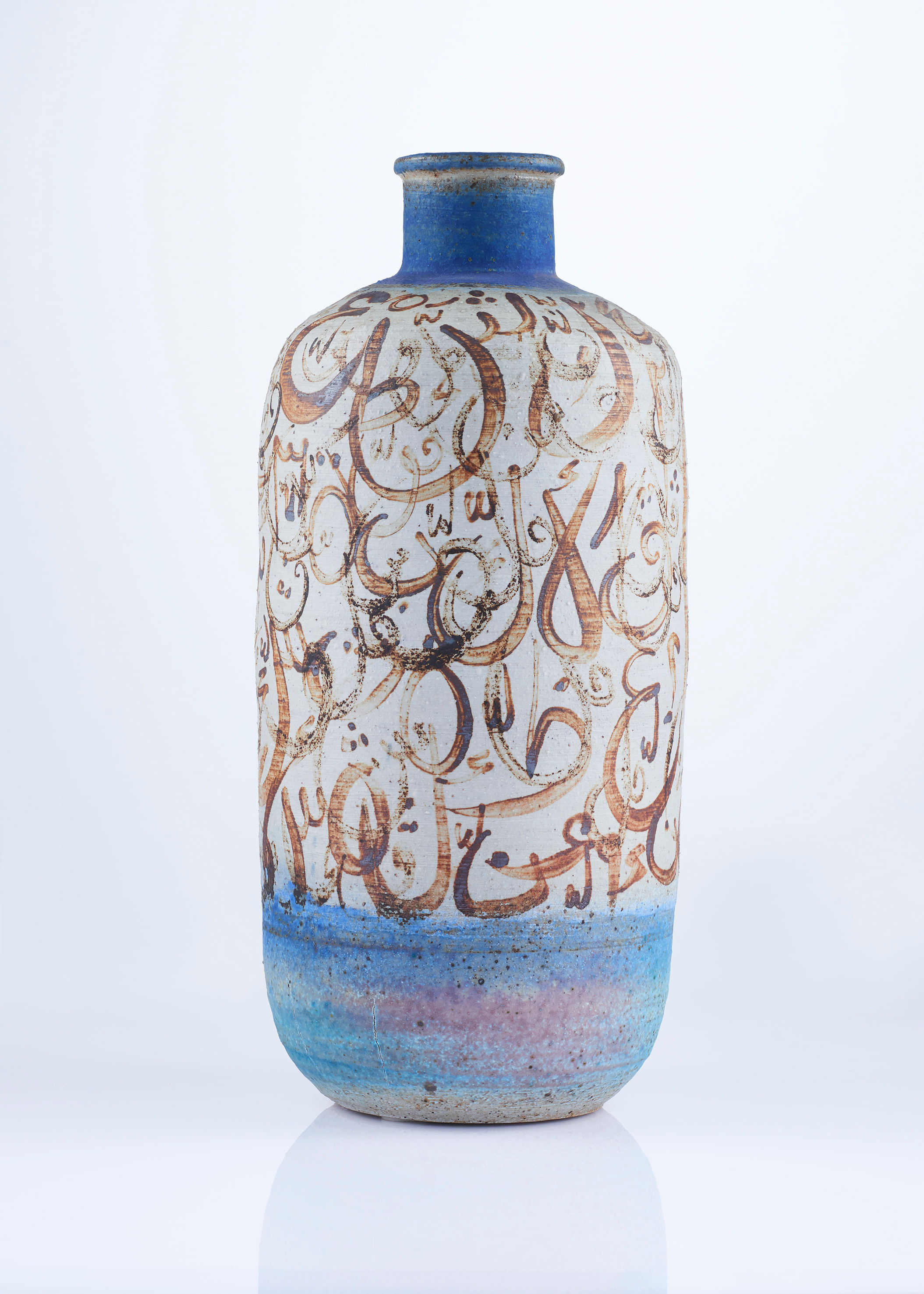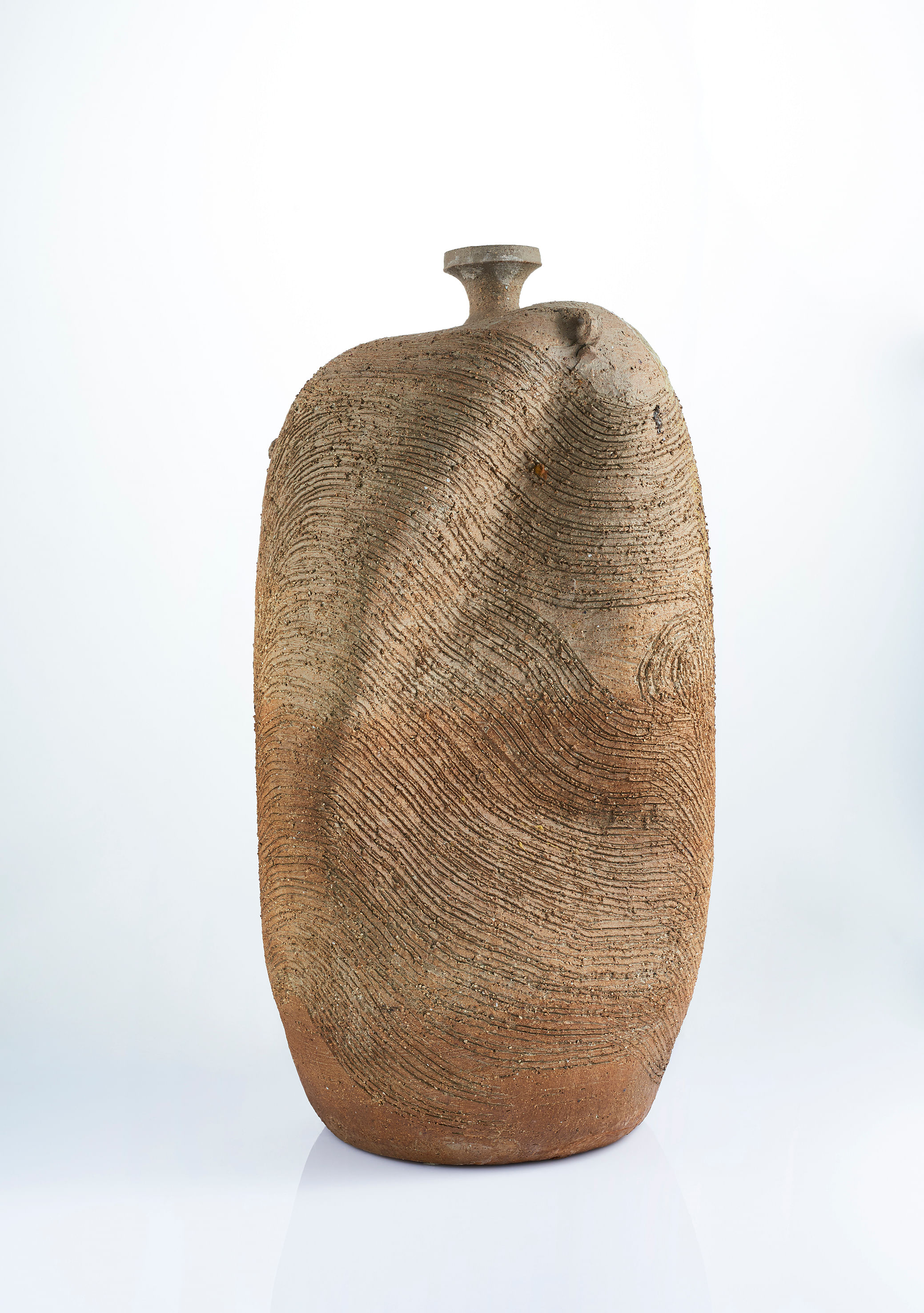-
VIEW IT / ISKANDAR JALIL: KEMBARA TANAH LIAT (CLAY TRAVELS)
-
WHERE: National Gallery Singapore, 1 St Andrew's Road, Ngee Ann Kongsi Concourse Gallery and Concourse Gallery 2, Basement 1
WHEN: Thursday to Feb 28 next year
ADMISSION: Free
Iskandar Jalil's lifework in two exhibitions
Two exhibitions highlight the career, style and works of Singapore potter Iskandar Jalil

Cultural Medallion recipient Iskandar Jalil is in the twilight years of his career as a master potter.
At 76 and recovering from Stage 4 prostate cancer, he has taken to making much smaller pieces of ceramics that do not require intense labour. He has also said he will not hold any more solo shows.
Yet his lifelong devotion to pottery and the teaching of the craft continue to be in the spotlight, with two new exhibitions organised separately by the National Institute of Education and National Gallery Singapore.
The first, at the National Institute of Education's art gallery, opened on Aug 17 to help teachers-in-training as well as the public learn more about the master potter's artistic process.
It features 32 works and highlights the diversity of forms and textures in Iskandar's oeuvre. The works are mostly recent pieces and belong to the institute's collection.
The show includes a display of his test pieces, which point to his constant experimentation with different types of slips and glaze, as well as a section on the different seals he uses to sign his works, which reflect his creativity and attention to detail. Another segment highlights the distinct qualities of different types of local clay, which he uses to make his works.
Mr Paul Lincoln, 42, a senior lecturer at the institute who helped put together the show, says it pays homage to the institute's accomplished alumnus, who trained as a mathematics and science teacher in 1960 at its precursor, the Teachers' Training College, and was recently conferred an honorary Doctor of Letters by Nanyang Technological University, which the institute is a part of.
The exhibition at National Gallery Singapore, on the other hand, is a survey show that aims to offer an expansive view of the potter's prolific, five-decade-long career.
It opens on Thursday with close to 180 works drawn from the collections of individuals, corporations, government agencies and museums here.
The pieces on display date as far back as the 1960s and are grouped according to themes that surface in his works, such as domestic life, imperfections that arise from chance and his extensive travels. Examples include the household item tingkat (a tiered food container), vessels that result from accidents in the kiln and ceramic pieces inspired by his travels overseas.
What emerges from the sweeping showcase is the richness of modern art in Singapore and South-east Asia as seen through Iskandar's pottery, which blurs the lines between fine art, craft and function, and recast familiar artistic forms such as calligraphy and painting through his writing and glazing on clay vessels.
The museum's senior curator Seng Yu Jin, 37, says: "When we talk about breaking down the barriers between art and life in modern art, we tend to speak of performance artists such as Joseph Beuys, but Iskandar was also doing this, just in terms of ceramics."
On having two ongoing exhibitions documenting his life's work, Iskandar says philosophically that the attention will be fleeting.
"The interest will die soon after I am dead," he says, with no bitterness. "My hope is that there will be someone to continue my work - as a teacher, as a craftsman."
Items from Iskandar's home on show
The domestic lives of potter Iskandar Jalil and his family have been temporarily disrupted for the survey show of his works at the National Gallery Singapore.
Pieces of furniture, including a table and hat stand, and pots for cooking sauces and food, are among the ceramic items that have been emptied and removed from the residences of the potter and his family members, to be displayed in an interim home in the museum.
The bare-bones dwelling, which is inspired by a rumah Melayu, or traditional Malay house, is the work of Singapore artist Gerald Leow. It occupies one of two galleries dedicated to the survey, and the space is specially lit to suggest the passing of time from day to night.
Placed throughout the rooms of the house are the corresponding ceramic items - pots for storing food in the kitchen, the table in the living room and, in the bedroom, a pair of ceramic pieces named after the potter's son, Edzra, and daughter, Elena.
The curators say the intimate exhibition setting is deliberate.
Assistant curator Syed Muhammad Hafiz, 31, says: "Iskandar always refers to himself as a craftsman or potter rather than an artist, so we asked ourselves, 'How do we activate both the functional and non-functional aspects of his works in a museum?'"
The house-like installation aims to do this by presenting his ceramics not only as works of fine art, but also as everyday, utilitarian objects, offering viewers a holistic experience and understanding of his ceramic practice.
To maintain the personal feel of the immersive exhibit, no more than 15 visitors will be allowed in the house at one time. It is perhaps apt that the installation is titled Some Of You Will Be Asked To Leave, after a house rule at Iskandar's workshop.
In the main gallery of the show, the works are displayed on raised platforms which are kept low and unenclosed, giving viewers a sense of immediacy when encountering the ceramics.
The intimate setting is perhaps fitting, given that Iskandar counts his home as one of his legacies.
In an interview with The Straits Times, he says: "My legacy is my house, where I have a lot of pieces that I don't show to the public, and my books, my writings."
As for his public legacy, he says: "All the public wall murals and pieces in the MRT and airport, there is more than enough."
Artistic reflection
Five things one learns about master potter Iskandar Jalil from the National Gallery show
1 He is a globetrotter
He travels widely and off the beaten path and his trips overseas have often inspired his works and marked milestones in his artistic career.
For example, he went to India to study textile weaving and spinning on a Colombo Plan scholarship in 1966 and his observations of his time there led to a set of figurative works for his first solo exhibition, held at the seminal Alpha Gallery in 1984.

He also travelled to Japan in 1972 on a Colombo Plan scholarship to study ceramics engineering at the Pottery Design and Technical Centre in Tajimi City, and his sense of aesthetics is deeply influenced by the Japanese concepts of shibui - simple, unobtrusive beauty - and wabi sabi - beauty in transience and imperfection.
On another occasion, a trip to Scandinavia left him with such a deep impression of its intense blue waters that he developed his signature "Iskandar Blue" glaze.

2 He has a special affinity with motorcycles
He lives and breathes his craft, so his works tend to have an element of biography in them. His love for bike-riding is one such example.
He has been a motorcycle owner since the age of 18 and he was the winner of motorcycle rallies here in the 1960s. He also travels around Singapore on his motorbike to collect clay for his ceramics.
The motorcycle motif recurs in his body of work as wheel-shaped sculptures. His bike plate, which he has kept through the years, is also inscribed on the rear of a piece he modelled after a tongkang, a type of South-east Asian boat.

3 He imbues his work with observations on society and politics
He tends to work intuitively and things that weigh on his heart and mind may take form as he shapes the clay.
An example is the porcelain work, Ay-Yah Stop At Three Only, from 1988, which references the Government's push in 1987 to encourage families to have three or more children if they can afford it; this, after fertility levels fell significantly with the campaign in the 1970s to have families stop at two children.
Another example is his ceramic work modelled after the kentongan (above), a slit gong used in kampungs here to call the villagers together for meetings.
With the disappearance of kampungs in Singapore, such instruments have faded away from sight and use.

4 He enjoys calligraphy
He is an avid journal keeper who fills his sketch books with his stylish penmanship, and his love for calligraphy extends to his pots.
He sometimes covers the surface of his pots and vessels with recitations from the Quran in Jawi script (above) using a calligraphy brush.
Occasionally, he also writes in English on his pots.

5 He embraces serendipitous imperfections
He is a perfectionist and throws away his works when they are not up to scratch, but he keeps pieces that are beautifully imperfect when they arise from chance and accident.
An example is a large striated vessel (above) that he accidentally bumped his elbow into while the clay was still wet, resulting in the vessel's unique asymmetrical form. The vessel is in his collection and before it was exhibited, it stood in the living room of his home.
Taking the pots out for a 3D spin
The freedom to spin and tip a pot by master potter Iskandar Jalil for a closer look may soon belong to many people.
The National Institute of Education is working on a project to produce detailed 3D scans of his works in its collection and make them available through digital platforms such as a website and a mobile application.
Mr Paul Lincoln, a senior lecturer at the institute who is driving the project, says it aims to open up access to the potter's highly prized works and allow more people, including students, to appreciate them up close and from different angles, as well as to interact with them in a tactile way.
An example of a 3D scan from the project was on display during the opening of the institute's exhibition of Iskandar's works.
-
VIEW IT / DR ISKANDAR JALIL: A MASTER POTTER'S PHILOSOPHY & PROCESS
-
WHERE: The Art Gallery, 1 Nanyang Walk, National Institute of Education, Block 3C
WHEN: Till Sept 16, 10.30am to 5.30pm (weekday), closed on weekend
ADMISSION: Free
The scan, of a water bucket in the exhibition, was shown on a high- definition touchscreen. Users could rotate the virtual vessel 360 degrees and examine the colour and texture of its surface. They could also tip it sideways to look at its base.
The project is developed in partnership with Fraunhofer IDM@ NTU, a research centre for interactive digital media technology that was launched in 2010 under the auspices of Nanyang Technological University and Fraunhofer-Gesellschaft, Europe's largest institution for applied research.
The virtual documentation of Iskandar's pots in the institute's collection is expected to be completed by next year.
Join ST's Telegram channel and get the latest breaking news delivered to you.
A version of this article appeared in the print edition of The Straits Times on August 30, 2016, with the headline Iskandar Jalil's lifework in two exhibitions. Subscribe

